The Golf presented on the Portuguese test drive is a semi-finished product from the point of view of some journalists. For example, Russian. The eighth generation Volkswagen that is relevant to Russians will appear at best in a year, but with a kind of suspension package for bad roads and, like the Jetta, with two localized engines. Only the 150-horsepower turbo 1.4 TSI will be produced not with a six-, but with an eight-speed Aisin automatic transmission. The 110-hp 1.6 MPI naturally aspirated engine, familiar from the Polo and Rapid, produced in Kaluga will be the basic one. As in the case of the sedan, the engines will be sent to foreign production. And not to Mexico, but closer — to Wolfsburg.
Changes in the cabin are universal for any market. And, unfortunately, they are not for the better. A fully analog interior of the previous “seventh” Golf didn’t require getting used to. Now getting to know the car is like a quest. Physical buttons are almost completely replaced by touch panels. You can’t get to some functions except through the multimedia interface.
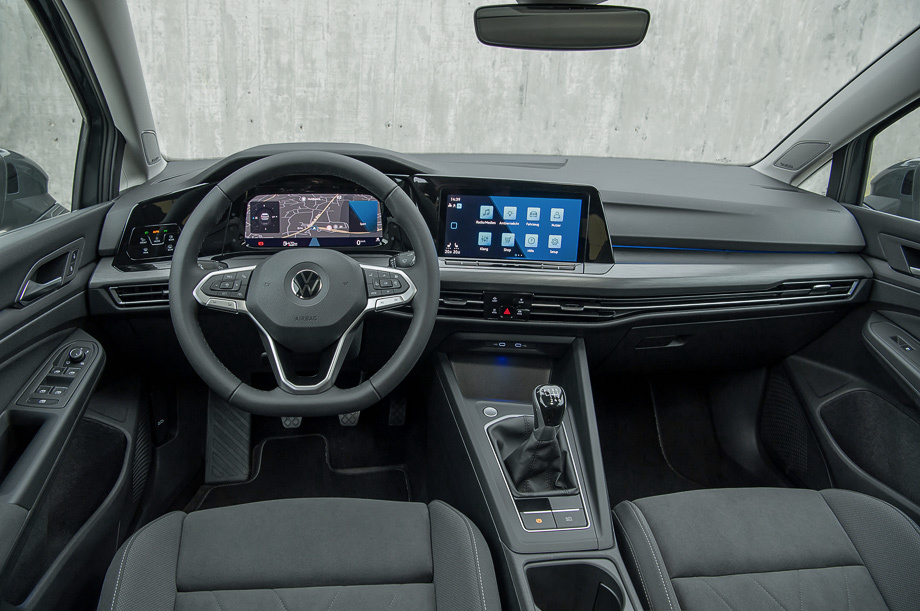
There is a sensor strip in front of the main display to control main adjustments. To change the volume, you need to hold on the middle part, the temperature — on one of the peripheral. At the same time, the driver and the passenger can’t change it at the same time: the first who touches their sector is the boss. More subtle settings need to be searched in the menu. Yes, it is logically organized, but you still get distracted on the go.
There is a suspicion that the electronics are still ill-considered. It is not possible to connect to a Wi-Fi access point via a QR code, although such an opportunity is provided. Entering the password manually solves the problem for a while. As soon as you use wireless CarPlay, the Internet distribution stops. And it doesn’t resume even after disconnecting from the phone. The system slows down in some menu items.
There are no complaints about the fit geometry, but it hasn’t changed compared to the previous model. The adjustment ranges are comprehensive, the mutual arrangement of the controls is optimal. The visibility is also good: the thickness of the front pillars is moderate, the left wiper doesn’t reach the edge of the windshield by only a couple of inches. The exterior mirrors are small, but effective, and the view into the interior is not blocked by anything. However, all this can’t affect the general impression that ergonomics has deteriorated.
Drive comfort is also not the strongest side of the new Golf. It seems unnecessarily noisy. The motors on acceleration are too distinct, and there is no beauty in their sounds. Having accelerated to 60 mph on the speedometer, the hatchback seems to enter the dense layers of the atmosphere — the air begins to rustle at the front pillars. The degree of road noise depends on the tires dimension: 18-inch ones also add ringing slaps on small irregularities. It’s a shame, because you can now order a very decent Harman Kardon audio system for the Golf. It seems that you can really enjoy its sound only in a traffic jam.
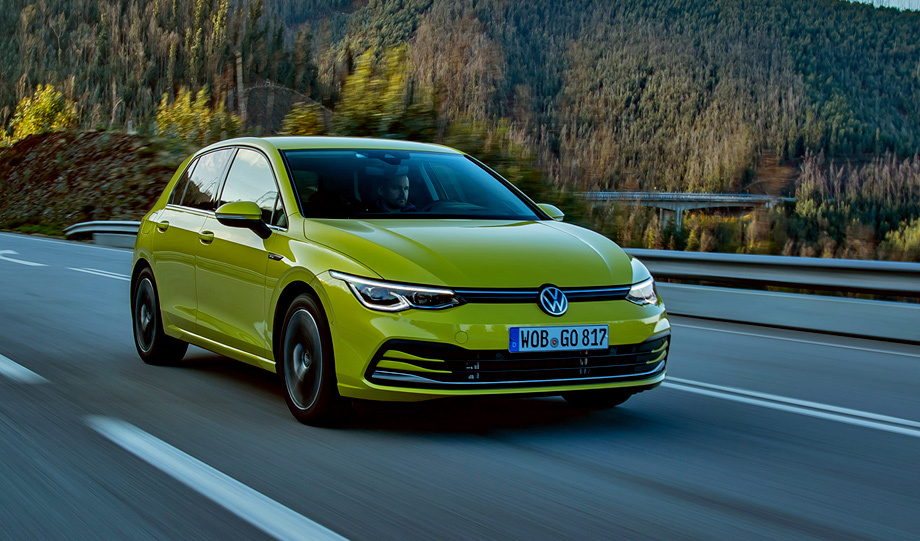
I don’t see any point in focusing on the smoothness of the ride. The modifications presented for the test with a rear multi-link system are shod strictly in Bridgestone Turanza T005 tires with a dimension of 225/40 R18. In this combination, it seems that the chassis has become stale and reproduces the relief in more detail than before. It transmits medium and large defects of the coating to the body better than we would like. But, again, the characteristics of Russian Golf will be revised. Shock absorbers with electronic control have once again proved their meaninglessness. The average buyer will never look for the only correct setting among a dozen possible ones, and they will feel the difference only between the extreme ones.
The Golf with a torsion-beam axle is also equipped with DCC pillars and perceived tougher than a multi-link. It noticeably trembles on a short wave. But a 17-inch Goodyear Eagle F1 Assymetric 3 is installed here. It generally hums less and notes individual artifacts of the coating not as enthusiastically as Bridge. And on the arc, the behavior of the car with a simplified suspension seems more unambiguous and predictable, although bumps falling under the wheels cause the rear axle to fidget slightly. It is not always possible to accurately predict the reaction of a multi-link car.
The problem is that all the cars in the test are equipped with a progressively cut steering rack. It seems to give a pleasant sharpness in the near-zero zone. However, as the steering wheel is deflected from zero, it becomes increasingly difficult to understand what angle the wheels are turned. As a result, the interaction with the car lacks clarity, taxiing becomes almost exploratory. There is also a mechanism with a fixed gear ratio provided for the Golf — perhaps it is better to choose it.
You shouldn’t grieve for European engines. At least for gasoline 1.5-liter EA211 evo. The moderate hybrid 1.5 eTSI (150 hp) version with a 48-volt starter-generator, of course, can work on two cylinders, but accelerates a bit boring-smoothly. The “eighth” Golf became heavier by only 44 lbs (if we compare the 1.5-liter versions), and lost no more than one tenth of a second at acceleration to 60 mph. And yet, subjectively, a car of the previous generation with a turbo engine of the same power and a DSG semi-automatic gearbox seems more dynamic. If the automatic transmission doesn’t fail, our Golf will be quicker than the European one.
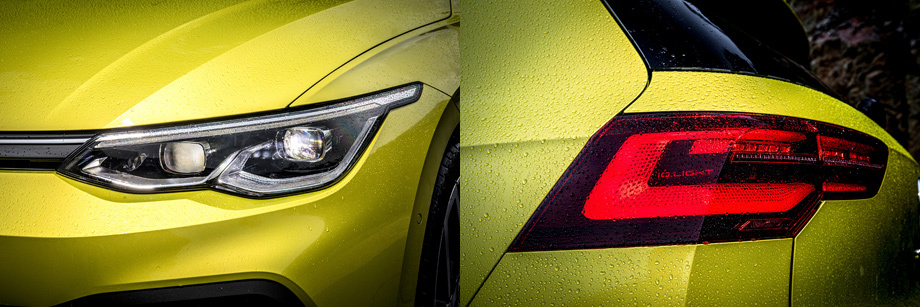
The derated to 130 hp option is also boring and slow. I only like the clarity of its six-speed mechanical gearbox. But again, we won’t see it. While the 150-horsepower two-liter diesel with DSG really drives. Although it makes a lot of noise. Nominally, the Golf 2.0 TDI is slightly inferior to the 1.5 eTSI modification, spending 0.3 seconds more on acceleration to 60 mph (8.8 seconds versus 8.5). But in reality, considerable 360 N•m form the impression of an easier-going car. And so far, this is the best hatchback I’ve tried.
Traction control is configured equally well for all versions. The full-time stabilization system successfully insures against drifting if you put more speed into the turn than you should. And the imitation of the differential lock delicately pulls the car into the turn under traction. At the same time, the setting of the brakes is a little confusing: the pedal free travel is too long. In addition, the drive sniffs funny when the pedal is depressed. However, the process of slowing down doesn’t cause any questions..
As a result, the difference between the new Golf and the “seventh” is about the same as between the models of the fifth and sixth generations. In both cases, progress corresponds rather to a deep restyling. From the Russian consumer’s point of view, today’s Golf offers nothing new, except exorbitant multimediality. And it doesn’t bring a person closer to the car, but, on the contrary, it separates. All this is against the background of rejection of the C-segment itself. The Golf at the price of the Tiguan is needed only for a variety of the model range.
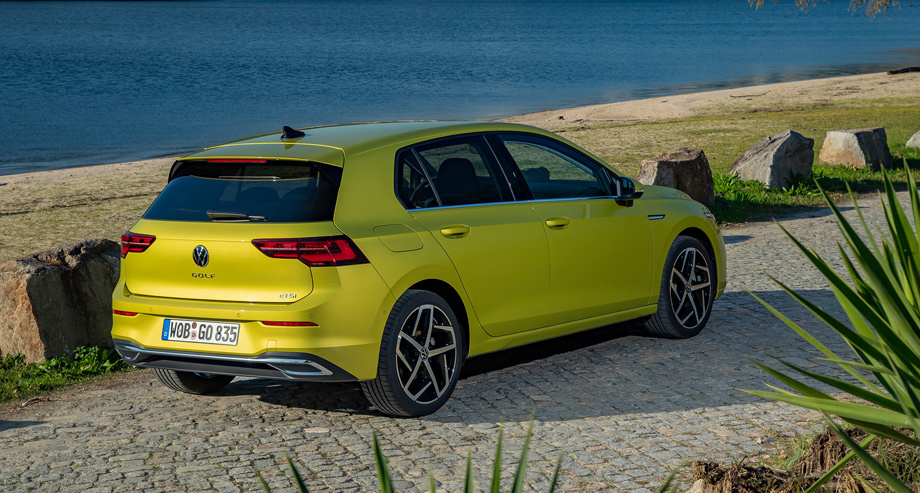
In Europe, the Golf can at least boast that it was the first Volkswagen to learn how to exchange information with road infrastructure (Car2X), as well as other vehicles within a radius of up to 800 meters, and is able to warn about congestion and various surprises. Online services like Amazon’s Alexa voice assistant are also in demand there. Certain functions can be controlled using a smartphone, which is about to replace the traditional key. However, global statistics say that most buyers are gradually turning away from hatchbacks, and it doesn’t look like the new Golf is going out of its way to break this trend.
Where would we be without the classics?
The Depot Volkswagen Classic historical department brought cars of the previous seven generations to Portugal. And they let us drive them! I just wouldn’t have had time to try everything out, so I immediately dismissed three newest Golfs, focusing on the origins. It’s a pity, the “fourth” Golf with a freaky offset-inline VR6 2.8 engine with a capacity of 204 hp was almost immediately removed from the test program due to a breakdown under one of the colleagues..
There are not even 621 miles on the odometer of the first-generation five-doorer, released in 1980. A new car that was produced almost forty years ago! The interior is primitive, but neat. The thin steering wheel easily rotates while standing still, despite the absence of power steering. The clutch drive is transparent enough to unmistakably start the first time. Seventy “horses” is not so little for a car with a curb weight of about eight hundred kilograms. The motor responds vividly to the gas, so acceleration doesn’t seem so sluggish, although, by modern standards, the hatchback is not fast.
The main thing is that it is interesting and pleasant to go. Rolls in turns serve as the right reference points for assessing the ultimate capabilities of the car. A long lever of the four-gear box requires sweeping movements, but here they are natural. And what an all-round visibility! You just have to not be lazy to turn your head, because small mirrors are not much use. I return the car — and a smile remains on my face.
Being in the Golf of the second generation, it is impossible not to think about the Lada 21099 which I drove in my youth: the interior is the same square-plastic. But it is more culturally assembled. The 1.8 motor here is more cheerful than the VAZ 1.5, but otherwise the sensations are similar. Even the obvious poke caused by the fluctuations of the power unit when adding gas and under deceleration is the same as on the domestic car. Oh, nostalgia!
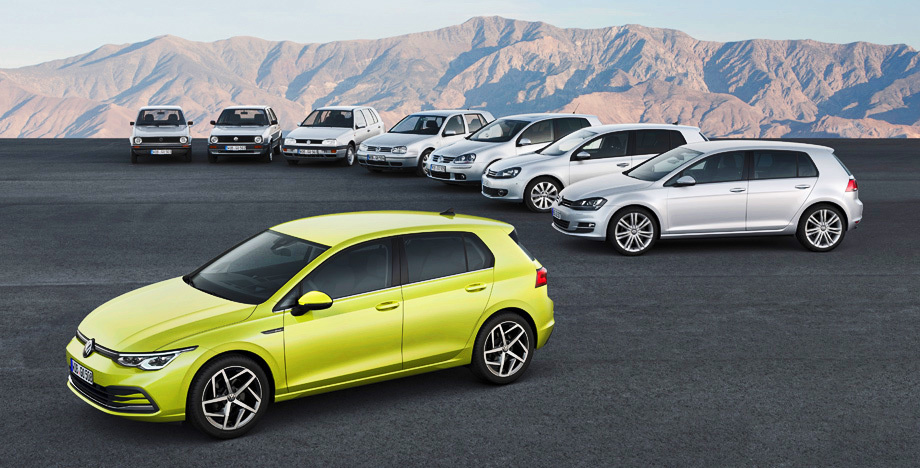
The steering wheel no longer seems light even on the move. In this instance with a mileage of much more than 56 thousands miles, the gear gate is a little loose, the gears shift a little tight. But the lever travel is already close to normal. The car, which has become heavier by 220 lbs and more, seems more organized; it accelerates more actively and goes faster in turns. This Golf is also generally a bucket, but it is no longer perceived as an oldtimer. Moving into its successor from the mid-1990s, I am clearly aware of how quickly cars were maturing at that time.
I liked the third Golf much more than the second. It moves bolder than many modern cars. Defiantly chirping, the 90-horsepower turbo diesel 1.9 confidently pulls in a fairly wide operating range. The clarity of the gearshift is perfect, the long-stroke clutch works clearly. The steering wheel is pleasantly filled with a returning force, the smoothness of the ride is excellent, including thanks to the 14-inch wheels. I would love to travel by such a car every day, indeed. It is a pity that now it is impossible to find the MK3 in such excellent condition — at least in such countries as Russia. Alas and alack.
This is a translation. You can read the original here: https://www.drive.ru/test-drive/volkswagen/5df9fdb3ec05c4802000000e.html

Published April 13, 2023 • 9m to read






